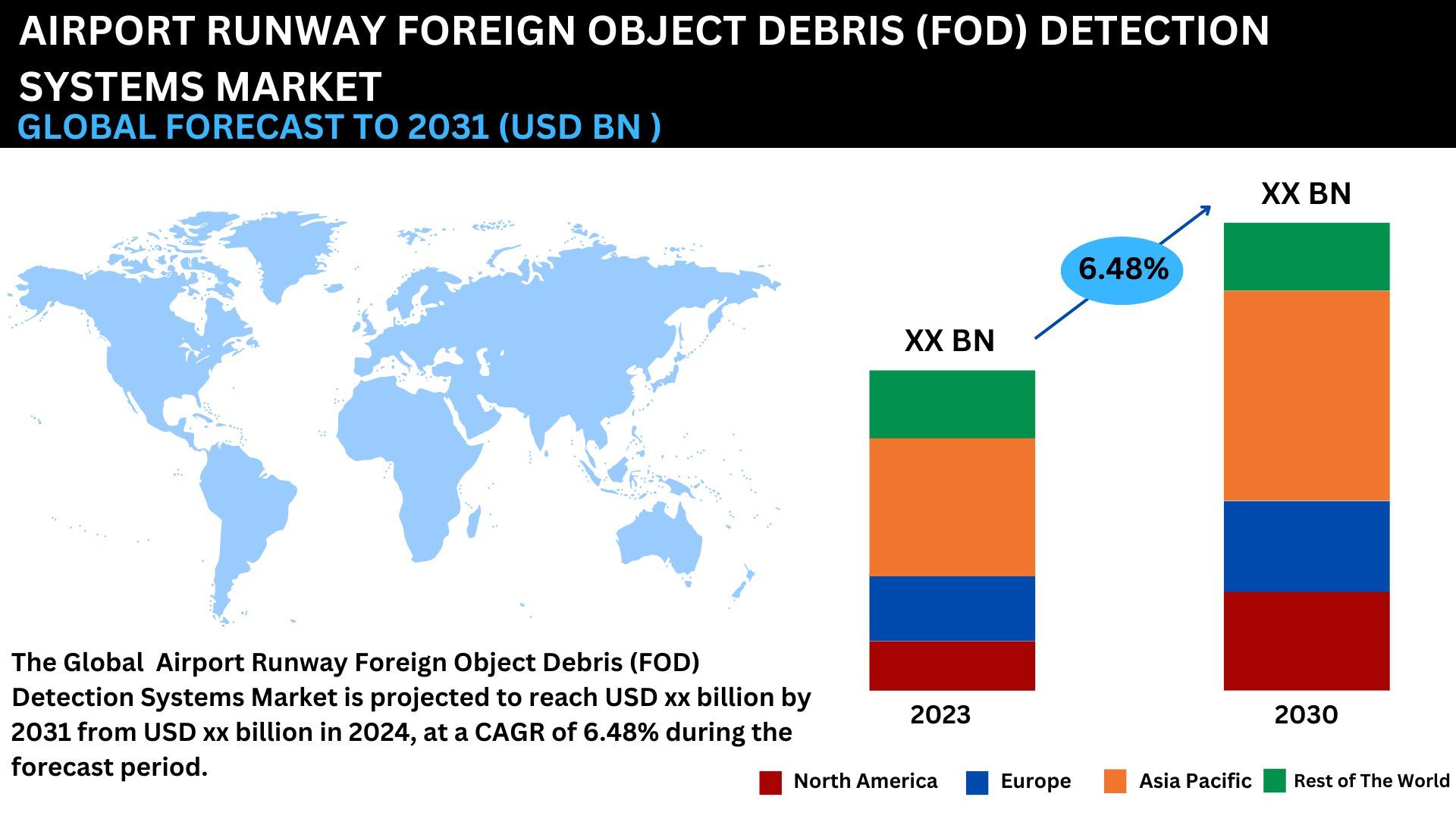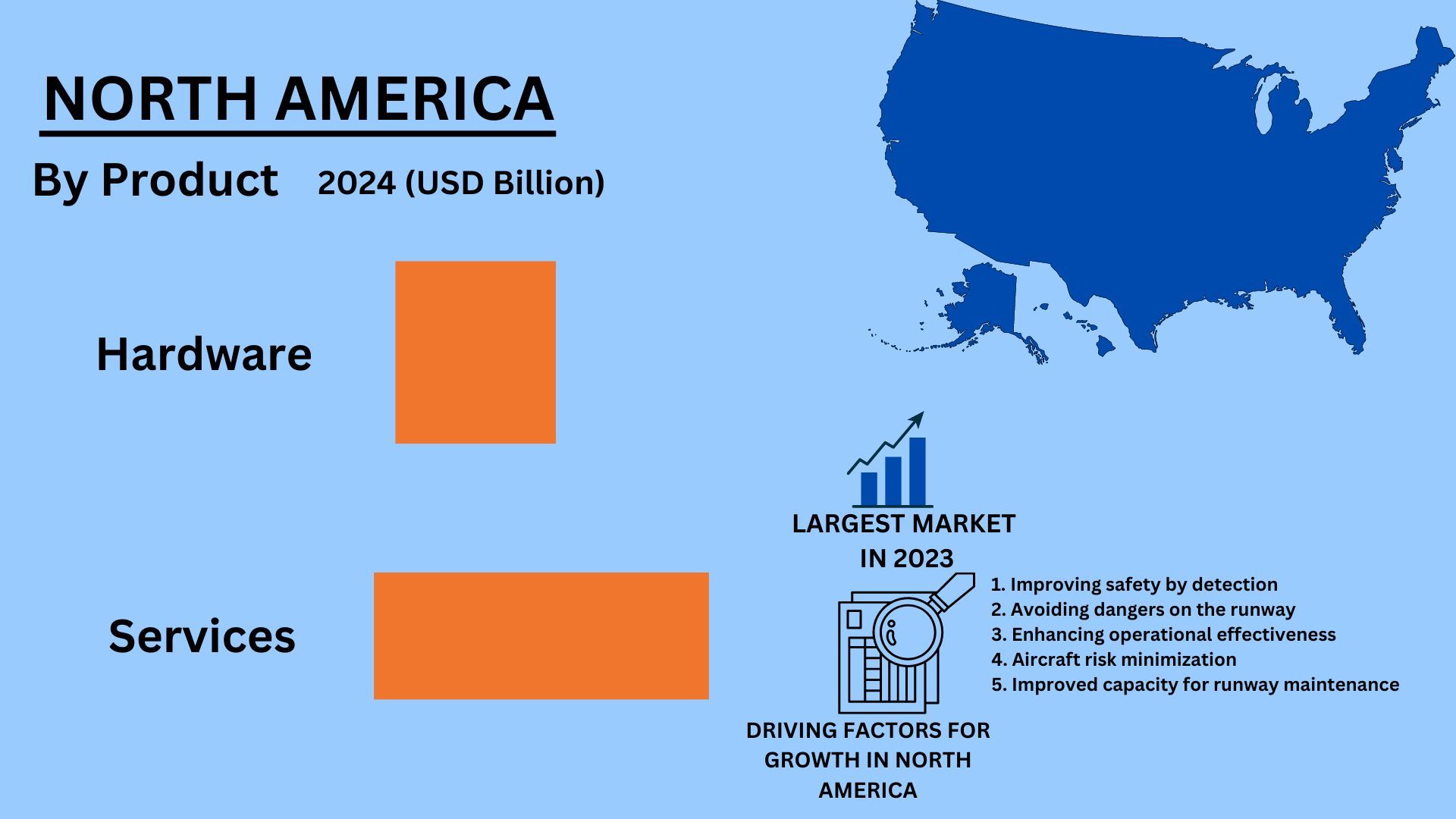GLOBAL AIRPORT RUNWAY FOREIGN OBJECT DEBRIS (FOD) DETECTION SYSTEMS MARKET
EMI10110 ID | Aerospace & Defence | March-2024 | 243 PagesFrom 2024 to 2031, the Global Airport Runway Foreign Object Debris (FOD) Detection Systems Market is expected to increase at a compound annual growth rate (CAGR) of 6.48%. In terms of revenue, the market was valued at USD XX billion in 2023.

The market for airport runway foreign object debris (FOD) detection systems is made up of companies that develop, produce, and apply technologies to detect and lessen foreign object debris on runways. Foreign objects on the runway (FOD) are any items or materials that shouldn't be there and might jeopardize aircraft safety during takeoff and landing. Examples of these items and substances include loose gravel, tools, and wildlife. These detection systems use a range of technologies, including as lidar, radar, and cameras, to effectively identify and remove FOD while ensuring safe operations. Airports all around the globe utilize these devices to guarantee safe runway conditions. The suppliers of equipment, the providers of maintenance services, and related technologies make up the market for these systems.
Market Dynamics for Airport Runway Foreign Object Debris (FOD) Detection Systems
Drivers: The need for sophisticated FOD detection systems is being driven by the aviation industry's growing emphasis on safety precautions.
The need for sophisticated Foreign Object Debris (FOD) detection systems is being driven by the aviation industry's increasing emphasis on safety precautions. These devices are essential for spotting and eliminating risks on airport taxiways and runways, lowering the possibility of aircraft damage, and guaranteeing passenger safety. The requirement for dependable FOD detection technology is growing as air traffic volume increases globally. This is necessary to preserve operational effectiveness and avoid expensive disruptions from debris-related events.
Restraints: The high upfront and ongoing expenses of sophisticated FOD detection systems
Advanced FOD (Foreign Object Debris) detection system deployment frequently requires a large initial investment and continuous maintenance expenditures. These systems need significant upfront costs for purchase and installation since they use complex technology like radar, infrared sensors, and computer vision algorithms. To maintain optimal performance, routine maintenance and calibration are also necessary, which raises the total cost of operations. For many airports and aerospace facilities, the benefits of increased safety and efficiency outweigh the hurdles and make the investment worthwhile.
Opportunities: There are several rich prospects associated with the worldwide expansion of airport infrastructure, particularly in emerging economies.
The swift growth of airport infrastructure worldwide, especially in developing nations, presents several profitable prospects. The need for updated and enlarged airport infrastructure is being driven by the rising demand for air travel brought on by growing urbanization and globalization. Significant investments are being made in airport construction, refurbishment, and technological improvements in emerging economies in order to accommodate increasing passenger volume and improve operating efficiency. Businesses in the aviation infrastructure, services, and allied industries will find it easier to take advantage of new possibilities as a result of this trend.
Challenges: Technical obstacles arise when adjusting FOD detection systems to different weather conditions and terrains.
There are technological challenges in adapting FOD (Foreign Object Debris) detection systems to different weather and topography. Variations in terrain surfaces, fog, and precipitation can mask detecting sensors and cause false positives. It takes sophisticated sensor fusion algorithms, reliable data processing methods, and a great deal of testing in a variety of situations to design systems that are impervious to these difficulties. Additionally, ongoing research and development in the field of aviation safety is required to guarantee the accuracy and dependability of detecting systems under a variety of scenarios.

The global market ecosystem for airport runway foreign object debris (FOD) detection systems
Well-known producers and service providers of Airport Runway Foreign Object Debris (FOD) Detection Systems are notable players in this industry. These businesses have been on the market for a while and have a strong worldwide sales and marketing network, as well as a broad product portfolio, organic and inorganic strategies. Notable businesses include Argosai Technology, Hitachi Kokusai Electric Inc., Moog Inc., Trex Aviation Systems, Xsight Systems Ltd., Rheinmetall Italia S.p.A., IntelliVision Systems LLC, AeroTechnix, Inc., and Others.
The scope of the market report focuses on airport runway foreign object debris (FOD) detection systems.
Certainly! Here's the table with the first row column highlighted in orange:
| Report Metric | Details |
|---|---|
| Market Size (Years) | 2020–2031 |
| Base Year Considered | 2023 |
| Forecast Period | 2024–2031 |
| Forecast Units | Million/Billion (USD) |
| Segments Covered | By Component, End user, and Region |
| Geographies Covered | North America, Europe, Asia Pacific, Rest of the World |
| Companies Covered | Xsight Systems Ltd, Moog Inc, Trex Aviation Systems, The Stratech Group Limited, Argosai Technology, Hitachi Kokusai Electric Inc, Pavemetrics Systems Inc, Rheinmetall Italia S.p.A., IntelliVision Systems LLC, AeroTechnix, Inc, and Others. |
